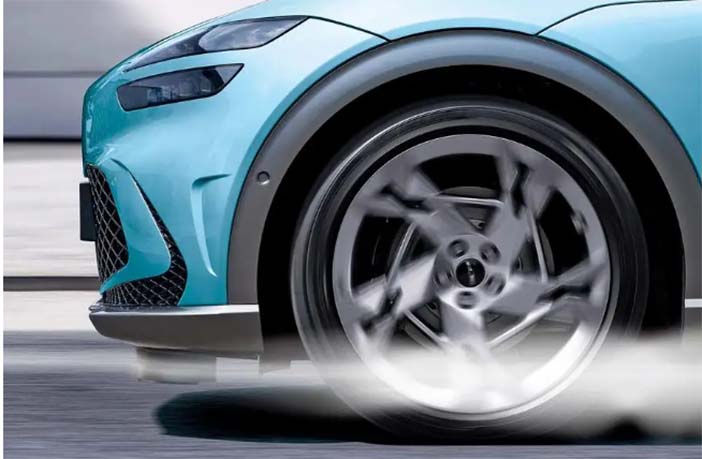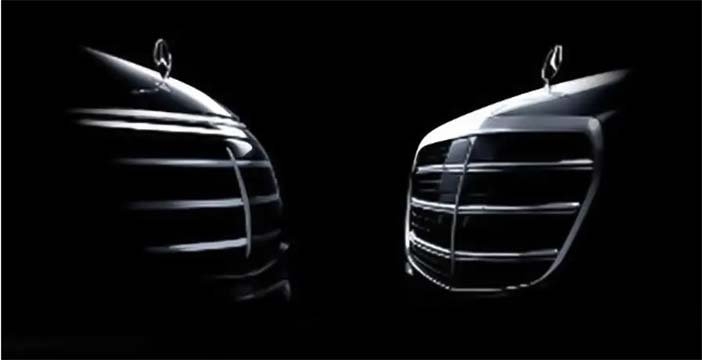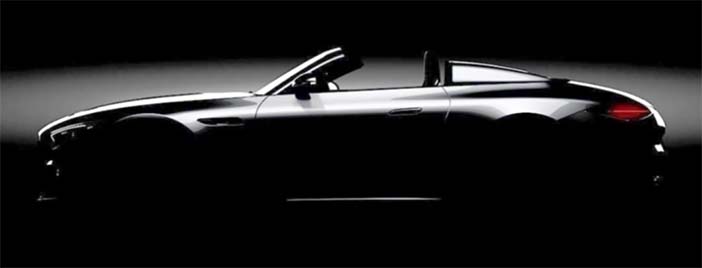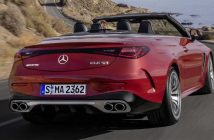+++ DACIA will not electrify its best-selling Sandero hatchback until its pure-combustion engine offering “becomes an issue” for customers. The Sandero has been Europe’s best-selling car to private customers since 2017, having sold some 270.000 units in the region in 2023; a 17.6% increase on the year before. It is one of the most affordable superminis on the market and remains available exclusively with a choice of pure-petrol and LPG engines even as rivals gain hybrid or pure-EV options. Dacia’s sales and marketing boss Xavier Martinet said sticking with pure-ICE power is a big factor in the Sandero’s accessibility, and the company does not plan to launch hybrid or electric variants until it is certain the market demand exists. He said: “When we have to launch an electric Sandero in due time, the question is really not: technically, what can we do? It’s really about when is it really demanded, asked for by customers? When does it become an issue of not having an EV? “We have the same question about HEV (hybrid electric vehicle) technology for the Sandero. Can we do it? Yes, we could: we have the HEV technology available on the Captur and the Clio, so there is no question whatsoever. “The question is more: do your customers want to pay several thousand euros today to buy a hybrid? And the answer is today: not so much”. The Sandero is now the only model in the Dacia line-up not to have an electrified option, with the Jogger and Duster both now available with hybrid power. The Sandero shares its CMF-B architecture with the Renault Clio, which is available as a hybrid, but Martinet says offering the same powertrain in the Sandero would threaten its value positioning and possibly dent its appeal. He said: “We could offer everything on the CMF platform: you could have gasoline, diesel, LPG or PHEV: they exist as offers today, and you could have all of that. But if you put everything to open up that diversity, there’s a cost associated to debt, and who pays the cost at the end? The customer. “We have no HEV, no PHEV, so you’re reducing the investment, and who benefits from that? The customer. Making choices is the toughest part of the job, but I think that shows Dacia is one of the few brands in Europe which can actually make some bold choices”. According to Dacia, the non-turbocharged Sandero SCe 65 is as carbon-intensive as the next-generation Duster hybrid over 200.000 km, due to reduced emissions from material procurement for the less complex model. The Sandero is due to be replaced in 2027/2028 by a new-generation car that is highly likely to bring the option of electric power; one that majors on affordability, rather than offering a long range or quick charging times. “There should be some kind of EV offer on the car, which is the top-selling retail model in Europe since 2017. But again, we’ll see in due time,” said Martinet. +++
+++ At the Geneva Motor Show, most international brands are missing, there are a handful of European debuts. Such as the DENZA D9: a MPV that marks the launch of the brand on the Old Continent. If the name doesn’t ring a bell, it’s a brand created by Chinese automaker BYD and Mercedes in 2010. Initially, the joint venture was 50:50, but the German luxury brand reduced its share to 10 percent in 2021 when Denza underwent restructuring. BYD is paving the way for Denza in Europe by bringing the D9, a large people mover with a high-end interior to rival another posh MPV: the Lexus LM. It’s not a completely new model since it initially went on sale in China in 2022. Much like in the People’s Republic, the Euro variant can be had as a plug-in hybrid or as a full EV. The 3-row family hauler has a boxy shape, large electrically operated sliding doors, a generous greenhouse and 2 equally polarizing grille designs. The imposing front end is just as striking as other new MPVs, including the Volvo EM90 / Zeekr 009 and the Toyota Alphard / Lexus LM twins. The boxy shape with a nearly flat roofline maximizes interior space and there’s a large panoramic sunroof to make the cabin feel more airy. Even though it’s showcasing the D9 in Geneva, Denza remains tight-lipped about the technical specifications for now. However, look no further than the Chinese version to discover all the relevant numbers. It’s 5.250 mm long, 1.960 mm wide and 1.920 mm tall, with a massive wheelbase of 3.110 mm. Since Denza wants to lure you away from buying that luxury SUV, the D9 has an upscale interior with leather just about everywhere you look. The cabin has a 2+2+3 configuration with adjustable and folding seats, not to mention ventilation and massaging functions. Aside from the usual pair of screens in the front, there are extra displays mounted on the armrests of the second-row seats to control various functions. In addition, there’s a rear-seat entertainment system with dual screens, along with a small fridge that can hold as many as 6 bottles. The captain’s chairs in the middle slide fore and aft, offering copious amounts of legroom, while the grab handle on the B-pillars makes it easier to get in and out. Even rearmost seats get USB ports and a central armrest, along with LED ambient lighting, and speakers from the Dynaudio sound system. While Denza keeps European specifications shrouded in mystery for now, the D9 sold in China can be had as a plug-in hybrid with a turbocharged 1.5-liter gasoline engine. The PHEV model is available with front- and all-wheel drive, along with a 20,4 kWh battery (standard) or an optional bigger 40,1 kWh pack. The combustion engine is good for 137 hp and 231 Nm, while the front-mounted motor is rated at 228 hp and 340 Nm. Go for the all-wheel-drive model and Denza throws in a rear-mounted motor that produces 60 hp and 110 Nm. The FWD versions have a combined output of 296 hp and 571 Nm, good for a sprint to 100 kph in 9.5 seconds. Step up to AWD models and you’re rewarded with a healthy 401 hp and 681 Nm to cut the sprint time to 7.9 seconds. In China, the Denza D9 electric model is also offered with a choice of FWD and AWD. Both have a front motor with 308 hp and 360 Nm. Upgrading to the all-wheel-drive model brings a rear motor producing 60 hp and 110 Nm for a combined 369 hp and 470 Nm. The FWD variant takes 9.5 seconds to complete the sprint, or just 6.9 seconds if you go with AWD. Both share a 103,4 kWh LFP (lithium iron phosphate) battery pack. As far as range is concerned, we should point out that the China Light-Duty Vehicle Test Cycle (CLTC) differs greatly from the Worldwide Harmonised Light Vehicles Test Procedure (WLTP) used in Europe. The Denza D9 electric model with front-wheel drive promises to cover 620 kilometers, while its all-wheel-drive counterpart can do 600 kilometers. Maximum charging power is 166 kW, in which case 15 minutes enables a driving range of 230 kilometers. The D9 isn’t Denza’s only model at the Geneva Motor Show since BYD’s sub-brand also has the purely electric N7. It’s a 5-seater SUV with a height-adjustable air suspension, panoramic sunroof and a maximum driving range of 570 kilometers. It’ll take 20 minutes to juice up the battery from 30 to 80 percent thanks to 230 kW charging capabilities. Denza is scheduled to reach the European market near the end of the year. +++

+++ The HYUNDAI MOTOR GROUP has developed a new active aerodynamic device called the active air skirt (AAS), which it expects to reduce a car’s drag coefficient by 2.8%. That might sound like a modest amount, but every tiny increment counts here, and the company says the device could improve the range of electric cars cruising at higher speeds. The AAS has already been tested on the Genesis GV60 (an electric SUV). It consists of 2 panels that drop down ahead of the front wheels at 80 kph, the speed at which Hyundai says aerodynamic resistance becomes greater than rolling resistance. To avoid it fidgeting in and out of play, there is some leeway before it retracts again. That happens at about 70 kph. The aero aid can also be used at speeds in excess of 200 kph and the panels have rubber lower parts to prevent damage from debris flung up from the road. The AAS can vary its position to control air turbulence around the front wheels at different speeds too. It’s arranged in 2 separate parts, one for each wheel, simply because the flat underbody of the E-GMP platform for which it has been designed takes care of airflow under the centre section and extending the AAS right across the car would be unnecessary. The 2.8% improvement in drag equates to a reduction of 0.008 in the Cd figure of the GV60, which Hyundai says could improve range by 6 km, assuming the EV is driven consistently at speeds at which its AAS is in use. This type of aerodynamic aid is being aimed squarely at SUVs, which are a tougher proposition than other car shapes when it comes to reducing drag. Hyundai and Kia are also using various other aerodynamic devices on their cars, such as rear spoilers, active air flaps (AAFs), wheel air curtains, wheel gap reducers and separation traps. Those features are credited with giving the Hyundai Ioniq 6 electric saloon its low drag figure of 0.21. AAFs open and close vents either side of the front bumper and when open generate the air curtain effect to reduce drag caused by the front wheels. Wheel gap reducers are trim pieces on the leading edge of the front wheel arches. And the separation traps are details either side of the rear bumper designed to guide airflow consistently from the edges of the rear spoiler down the sides of the car. It is worth mentioning that the Hyundai Motor Group isn’t alone in using advanced aerodynamic aids to promote its expertise. Back in the day, the 1982 Audi 100 was promoted as being the first production car with a Cd of 0.30. And BMW first mentioned its Air Curtain back in 2009 as part of its Efficient Dynamics programme. It explained at the time that wheels and wheel arches are responsible for 30% of overall air resistance, 40% comes from the proportion and shape of the car, 10% comes from functional openings for cooling the engine, brakes and transmission and 20% comes from the underfloor. +++

+++ MERCEDES-AMG will launch its first bespoke electric car in 2025, equipped with innovative drivetrain technology that’s likely to make it the firm’s most powerful road car yet. It will serve as an electric alternative to the existing combustion-engined GT 4-Door Coupé. Little has been given away about its design, but the car appears to stay true to the proportions of the motorsport-themed Vision 2025 concept shown at the 2023 Goodwood Festival of Speed. It also will have a prominent retractable rear spoiler, flush door handles and a split rear window. When it arrives next year, it will be tasked with taking on highly acclaimed and big-selling EV sports saloons such as the Porsche Taycan, Audi e-Tron GT and Lucid Air. AMG has already turned its hand to the Mercedes EQE and EQS duo to create warmed-up, 53-badged sports saloons with huge power outputs, but this new model will be designed from the ground up as a performance car. As such, it is expected to place as much emphasis on dynamic performance and engagement as it does straight-line speed. It will be the first car to use a bespoke performance-oriented EV architecture known as AMG.EA. This is understood to have been designed and engineered with an eye on facilitating the low-slung, sleek silhouettes that currently define AMG’s combustion sports cars. Central to establishing this platform as a dedicated sports car architecture will be the deployment of highly advanced electric motor technology from British firm Yasa, acquired by Mercedes in 2021. The Oxfordshire outfit’s disc-shaped axial-flux units, to be built at scale by Mercedes in Berlin, tout much higher power- and torque-density figures than conventional, sausage-shaped radial-flux motors. As a result, they can weigh less, take up much less space and operate more efficiently. AMG has yet to give any indication of the precise implications of this technology for its upcoming production cars, but Yasa boss Tim Woolmer confirmed that a motor bound for one of the German firm’s production cars weighs just 24 kg yet produces 900 Nm of torque and 480 hp of power in its own right. If used in tandem as part of a twin-motor system, it seems likely that the axial devices will result in a dramatic power boost over even the 760 hp AMG EQS 53 4Matic, potentially edging towards the 1.000 hp and 1.300 Nm marks. For reference, AMG competitors BMW M and Audi have access to EV platforms capable of handling upwards of 1.300 hp for their own next generation of sports EVs but they have yet to give specific details of their own direct rivals to AMG’s new super-saloon: the next-generation M3 and the RS6 e-Tron. Notably, a recent concept from Mercedes (the retro, wedge-shaped One-Eleven) houses both of its electric motors on the rear axle, suggesting four-wheel drive is not a given for AMG’s next-generation sports cars. At its unveiling, bosses highlighted the packaging benefits of both twin motors featuring at the rear: the front end is able to be brought as close as possible to the ground for optimal aerodynamic efficiency, but the motors’ compact footprint means there is still room for a sizeable rear luggage area. This suggests that any new electric saloon using such an arrangement can, in theory, tout the same practicality credentials as its V8-engined predecessor, making it a bona fide super-tourer. Prototypes for the electric GT 63 replacement are expected to start hitting the road in the coming months as the EV gears up for a market launch in 2025. As mentioned, our best look so far comes from the Vision 2025 concept. Measuring 5.100 mm long and with a wheelbase of 3.000 mm, the concept is well placed to succeed the similarly sized GT 63. Its proportions hint at a focus on interior space while maintaining handling and aerodynamic performance, with its wheels pushed into the corners and its silhouette defined by various wind cheating elements, including active aero components. Mercedes exterior design boss Robert Lesnik said the Vision 2025 takes “full advantage of the new AMG.EA platform in both the design and the proportions”. He added that the plan for the production version is to create “a low and sleek saloon with outstanding aerodynamics and the space to accommodate 4 adults in comfort”. Central to this pledge will be a new type of slimline, energy-dense battery design bespoke to AMG EVs. Mercedes-Benz has confirmed it will use a new silicon anode material from US firm Sila. This is said to offer a 40% improvement in energy density over existing graphite anodes and thus substantially boost range, with the added benefit of freeing up room in the interior. New-era AMG cars will follow the lead of their Benz-badged counterparts in adopting a bold cabin design centred on a full-width high-definition screen, as alluded to by the Concept One-Eleven. The 2025 saloon is described as a four-seater, but no doubt larger successors will make space for a third seat in the rear. +++
+++ MERCEDES-BENZ will offer a traditional grille on its EQS electric limousine as part of a wider overhaul designed to reverse a sales slump for the flagship EV. The Mercedes EQS will be offered with either a newly designed conventional grille with the 3-pointed star mounted on the bonnet or with the current, sleeker-looking grille with the star emblazoned onto the surface. “Some customers will want to keep a more sporty look and have the star integrated in the panel, and some we believe will want to have the more traditional look”, CEO Ola Källenius told investors on Mercedes’ recent earnings call. The company flashed up an image of what appeared to be the new grille during the analyst event, highlighting its similarity to the one used by the S-Class. The EQS will also be fitted with a uprated battery with new chemistry that will improve range, Källenius said. The updated EQS will be available from June, although cars with the new battery will likely go into production before that, he said. The new battery is expected to be the same upgraded pack recently installed in the EQS SUV, which has been expanded from 108 kWh to 118 kWh. In the EQS SUV, the pack adds another 50 km of official range, potentially meaning the range of the EQS saloon could be pushed close to 800 km. The EQS will also gain the option of “executive seats”, Källenius said without going into detail. The option is likely to swap out the rear bench for 2 individual seats that can recline. Sales of the EQS fell back last year as customers in the sector either stuck to ICE models or bought newer EV models, including the BMW i7. Across Europe, sales almost halved. Källenius said he was relaxed about the EQS’s performance against the combustion-engine S-Class, however. “Many customers in that segment view the S-Class and the sibling cars as kind of the ne plus ultra that they want to have and we don’t mind”, he told investors. +++

+++ MG plans to launch a €23.000 electric city car in the Netherlands by the end of next year, Autointernationaal.nl can reveal. Speaking on the sidelines of the new MG 3’s unveiling at the Geneva motor show, product and planning boss David Allison outlined plans to expand the Chinese firm’s electric car line-up downwards below the 4, hinting at a compact rival to the Dacia Spring. A concept for the new model (which could adopt the MG 2 name) already exists, Allison revealed, and could evolve into a production car in less than 2 years, speed being particularly important in this instance so that MG can take advantage of the dearth of small, affordable EVs currently on the market. He said: “I think that it’s an area that no one has really exploited successfully yet, because the focus has been very much on larger cars and really where they can charge the amount of money for people that are willing to pay it. But I think there’s a huge opportunity for someone who can get to the 4-metre EV for around €23,000. I think someone can do that with an acceptable range, decent-sized car about that price, and I think that person will clean up with it. And why not us?” Allison added that he has “been impressed with how quickly things tend to happen” at MG. He explained: “Product development is clearly a long-term thing, but it’s not inconceivable that you could go from concept to production in as little as 2 years”. It would be great if we could get something like that in the market by the end of next year. It’s still a couple of years away, to be perfectly honest. But I don’t think it’s inconceivable. And I think if we can do it, I’d really like to do it”. MG’s new entry-level model isn’t envisioned to undercut the Spring, but will nonetheless be comfortably among the cheapest full-sized EVs in Europe, with a price of around €23.000 slotting it in below the likes of the BYD Dolphin and Opel Corsa Electric. MG will need to put some clear air between any new entry-level EV and the existing 4 hatchback (which costs at least €32.285), in any case, to give it a distinct position on the market. “We need to start giving people more accessible cars at the price they feel comfortable affording, and that’s what this industry is really, really good at”, Allison said. It’s likely to be a bespoke product, designed and engineered primarily to suit the European market, as MG parent company SAIC doesn’t currently sell any small urban EVs in China that MG has deemed appropriate for export to Europe. It would, however, be built in China. MG wouldn’t, for example, seek to import its Indian-market Comet city car (which is based on the Wuling Air EV) to Europe, and nor is sibling brand Roewe’s Clever hatchback under consideration. Nonetheless, there is potential for this new MG to be sold worldwide, with Allison highlighting that SAIC’s European design centre in London works on a whole range of cars that aren’t sold in Europe is the brand’s best-selling market globally, which gives the British division a lot of influence over SAIC’s global operations. “It’s the spiritual home of the brand; we’re seen as being quite pivotal, quite important”, said Allison. Notably, he added, MG’s UK engineering centre in Longbridge (on the site of the old MG Rover factory) still plays a significant role in refining MG’s global products for the European market, having tested prototypes of the new Cyberster sports car and 3 B-segment hatchback for several months in the UK ahead of launch. It would play a similar role in refining a new EV supermini for European dealerships. It’s unclear whether the ‘2’ would use a variation of the larger 4’s Modular Scalable platform, as will be the case for the next-generation ZS and EHS. It’s likely that MG will seek to use an older, simpler architecture with a view to minimising production costs. +++
+++ Mercedes-Benz outlined plans to launch an ultra-luxurious range of MYTHOS branded models in 2022. I haven’t heard much about the lineup since, but the brand clarified that development work is ongoing. We won’t have to wait for very long to see the first Mythos-badged car. The announcement was made during a presentation that outlined Mercedes-Benz’s 2023 results for investors. The brand laid out four basic goals for what it calls its most demanding customers: the extension of the Manufaktur personalization program, a collaboration with fashion company Moncler, a limited-edition Maybach designed jointly with Virgil Abloh, and the first car in the Mythos series. It’s due out in 2025. While specific details weren’t provided, it looks like the first Mythos car will be an evolution of the new SL. Mercedes-Benz has previously described the Mythos range as a series of “ultra-exclusive collector cars” that will be built in limited numbers; it’s for those who find Maybach not luxurious enough. If that’s what you’re looking for, you may not be able to buy one even if you can afford it; the brand has also noted that these cars will be reserved for “the most dedicated enthusiasts and collectors”, suggesting only select customers will be invited to buy one. This approach isn’t unusual in the luxury segment. For example, Bentley recently unveiled a pair of few-off models called Bacalar and Batur, respectively. Long-time brand enthusiasts and collectors were offered the first build slots, and both models (which were limited to 12 and 18 units, respectively) sold out quickly in spite of a massive price tag. Mercedes-Benz may be trying to lure the same customers with Mythos. Gordon Wagener, the head of Mercedes-Benz’s design department, released a dark preview image of the first Mythos model in 2022 and it’s hard to tell precisely what we’re looking at. The picture (shown here) depicts a roadster reminiscent of the SL, but design details such as the shape of the headlights and the tonneau cover don’t match. Even if the yet-unnamed model is closely related to the SL underneath, Wagener’s Instagram post seemingly announces that it will take much more than nice paint and extra chrome to characterize a Mythos. More details about the first Mythos-branded Mercedes-Benz model will emerge in the coming months. +++




